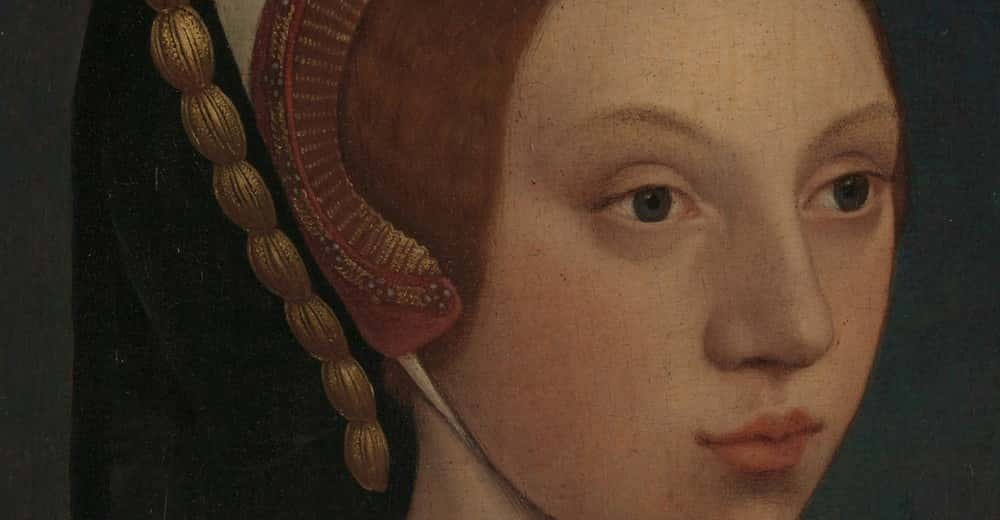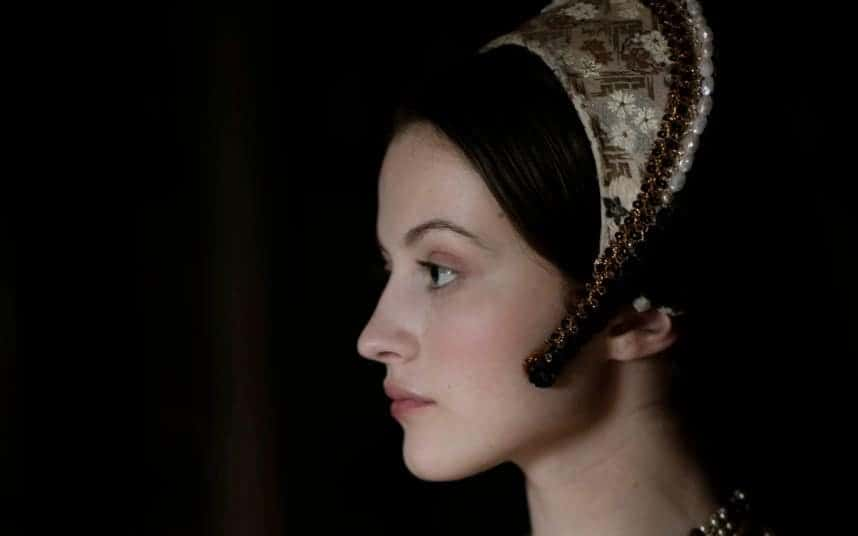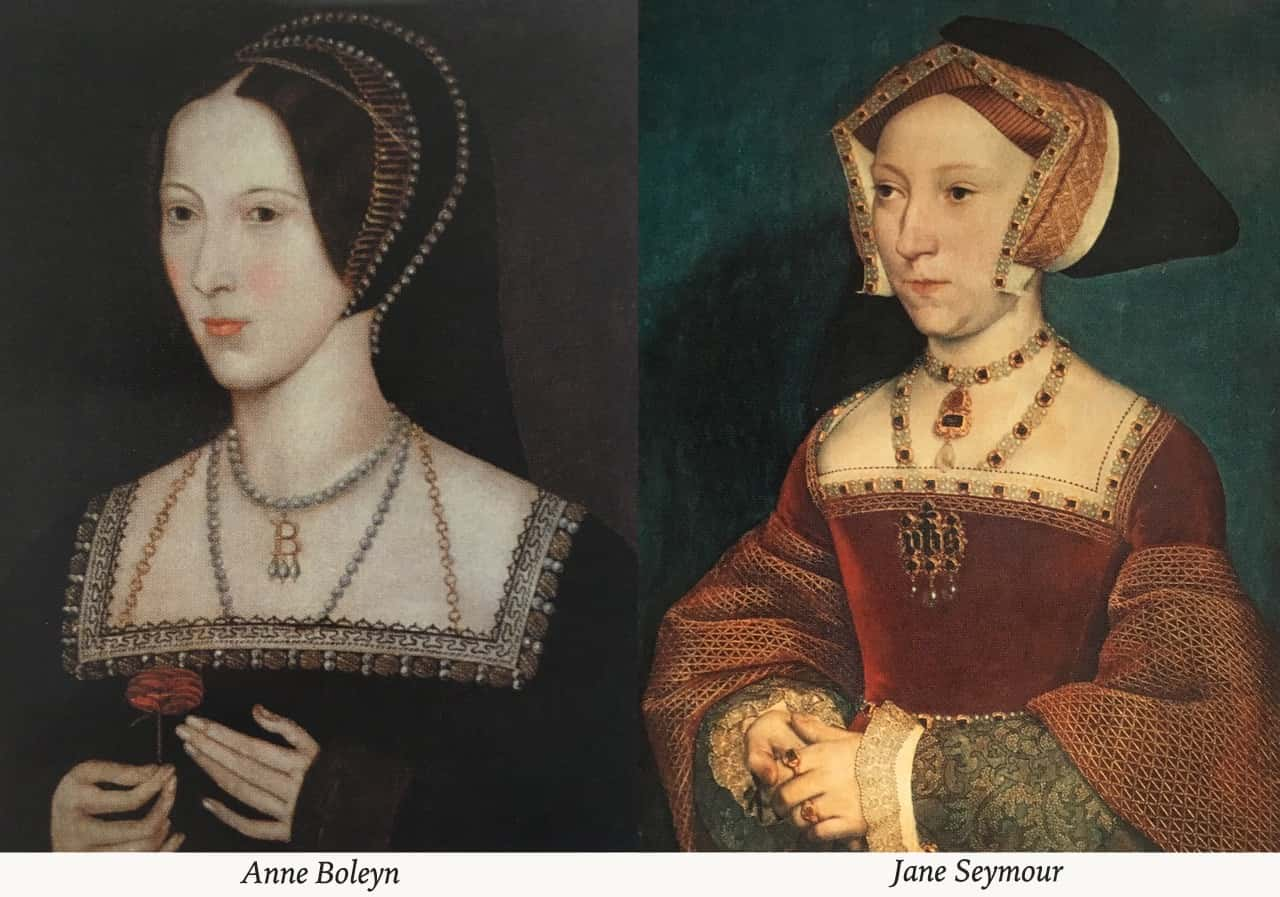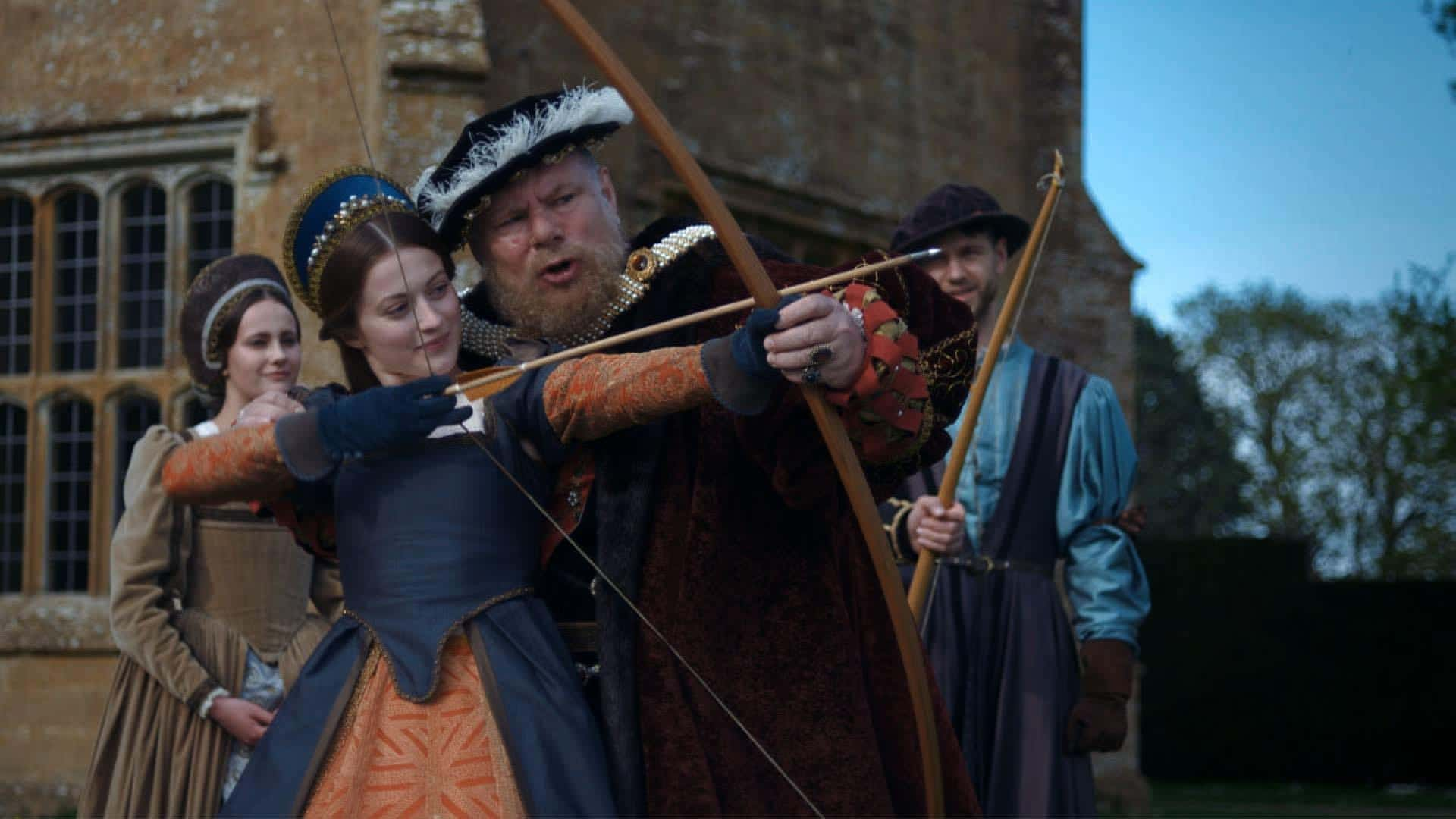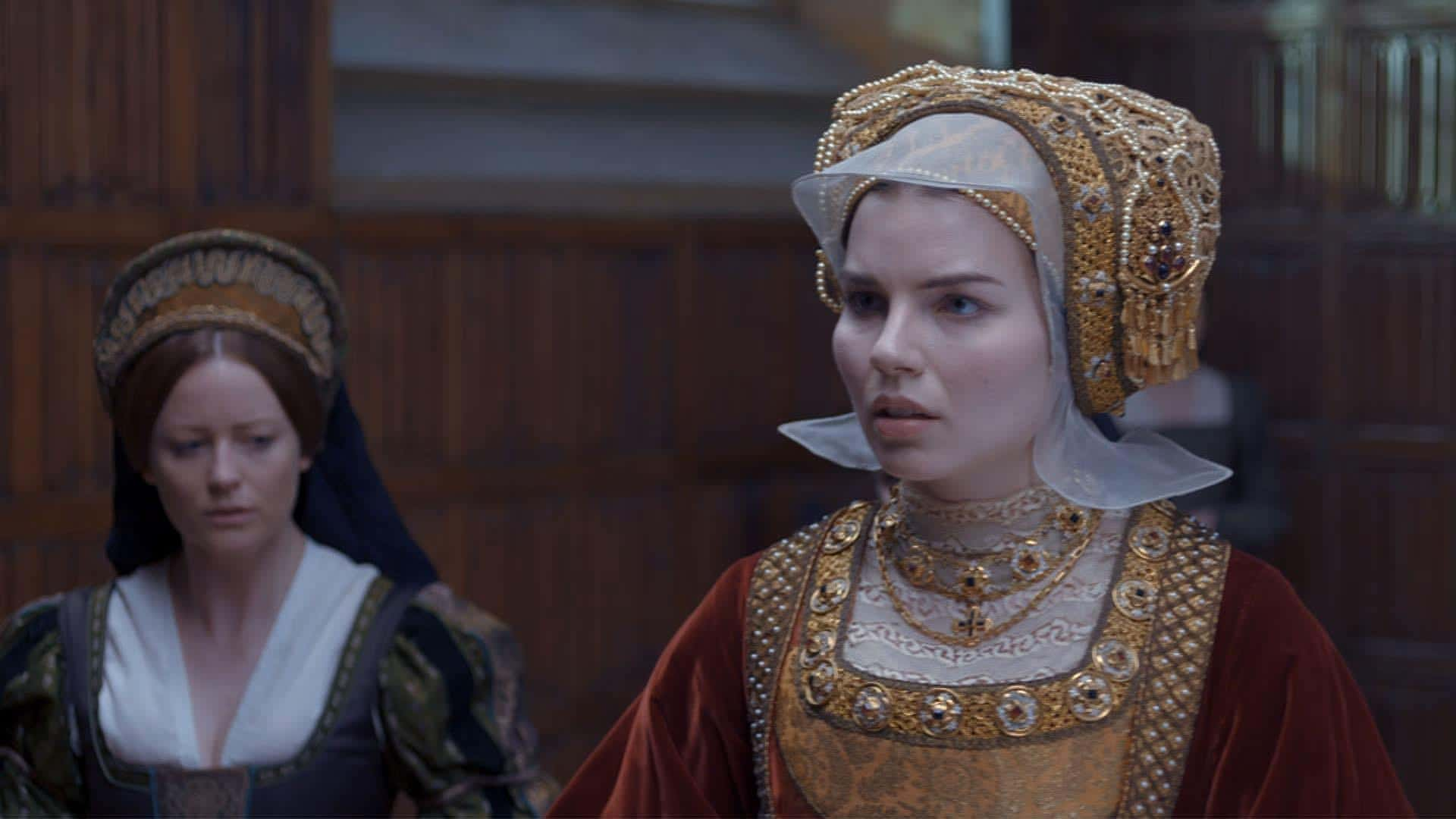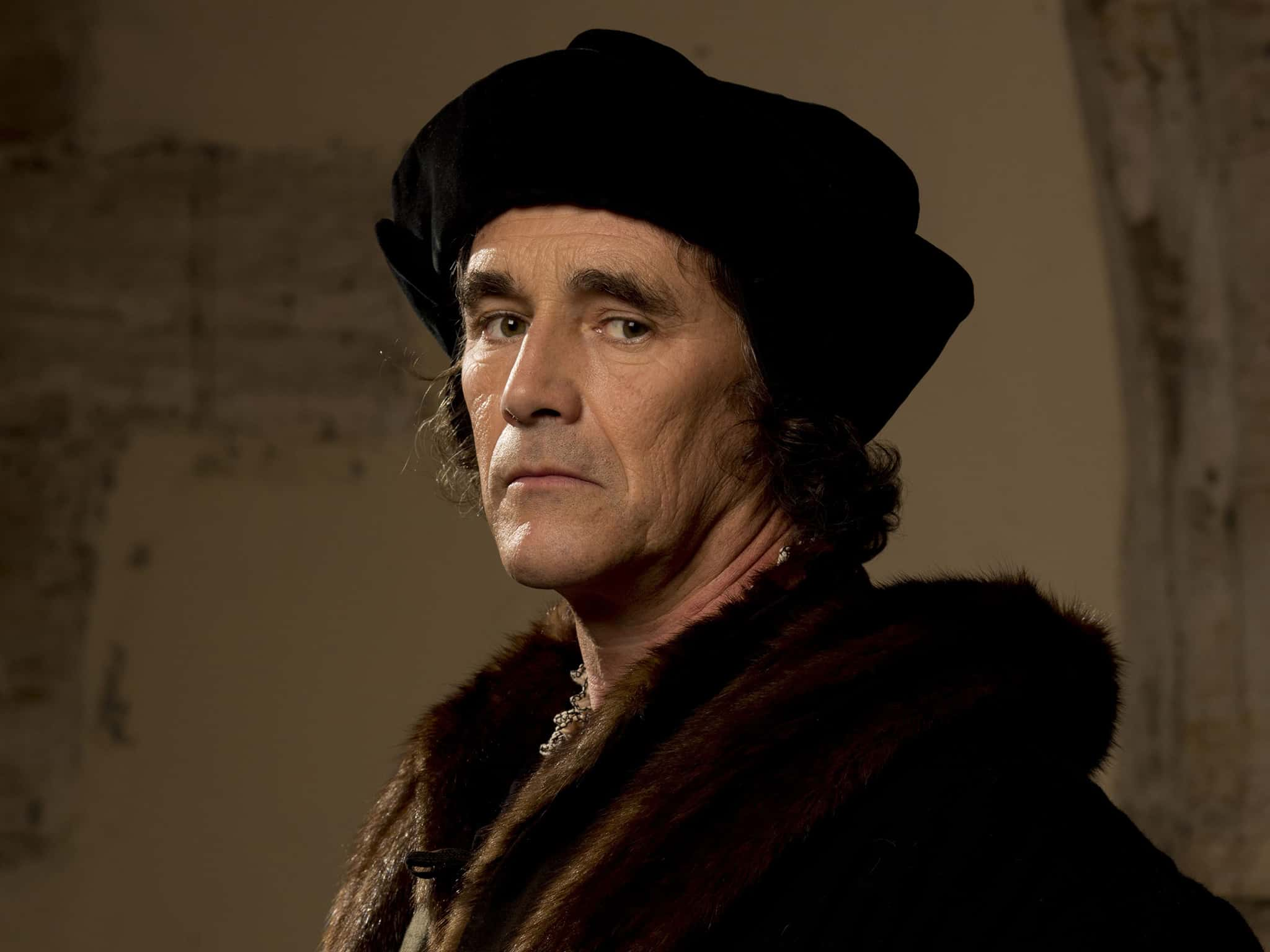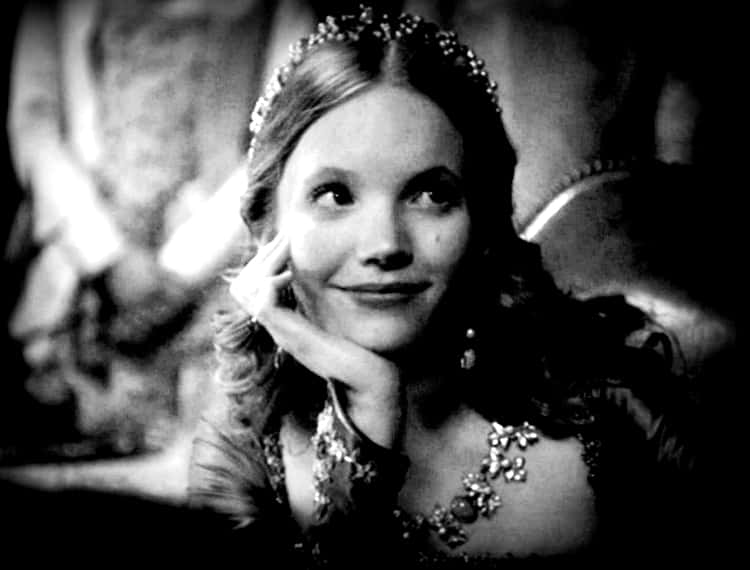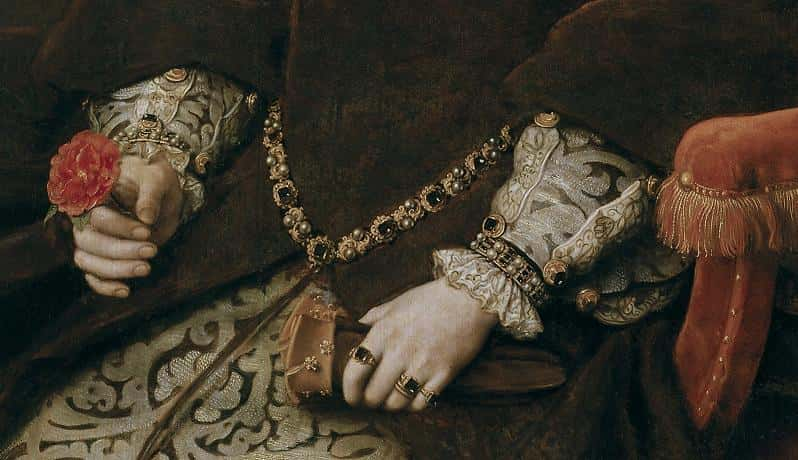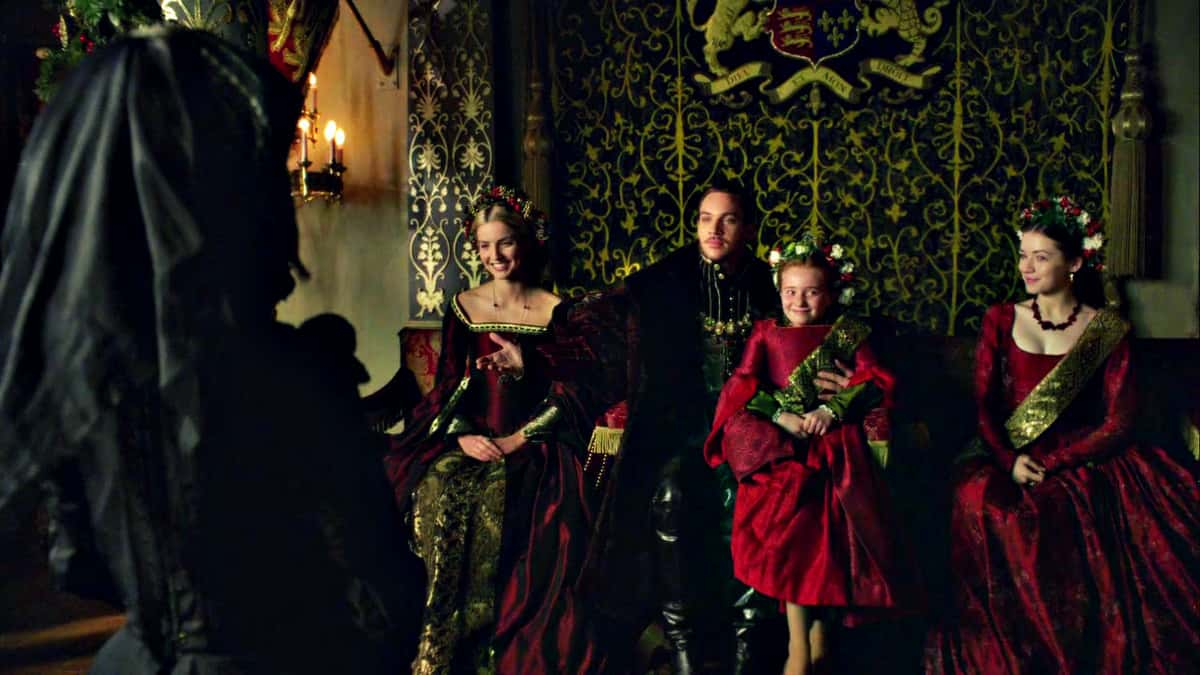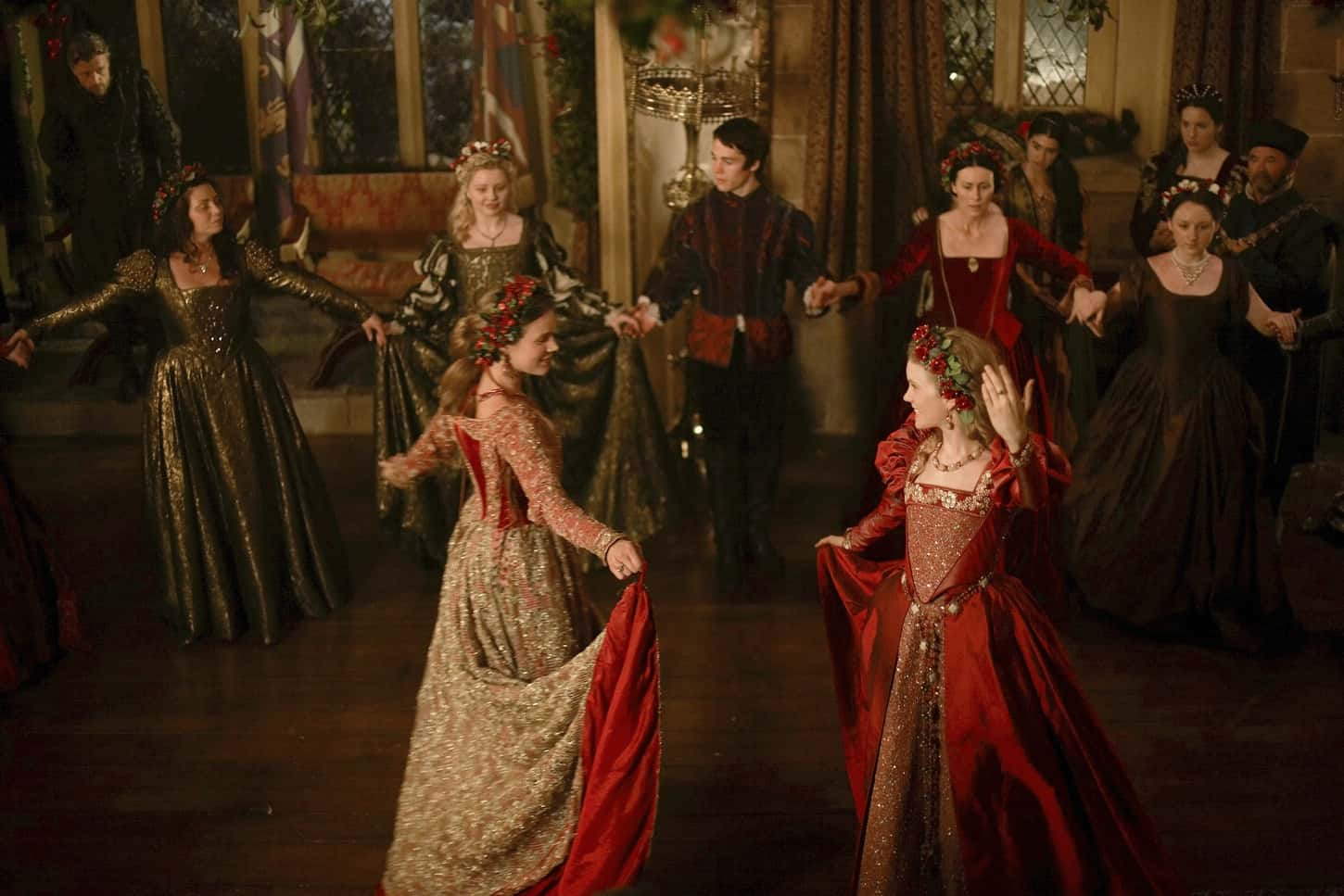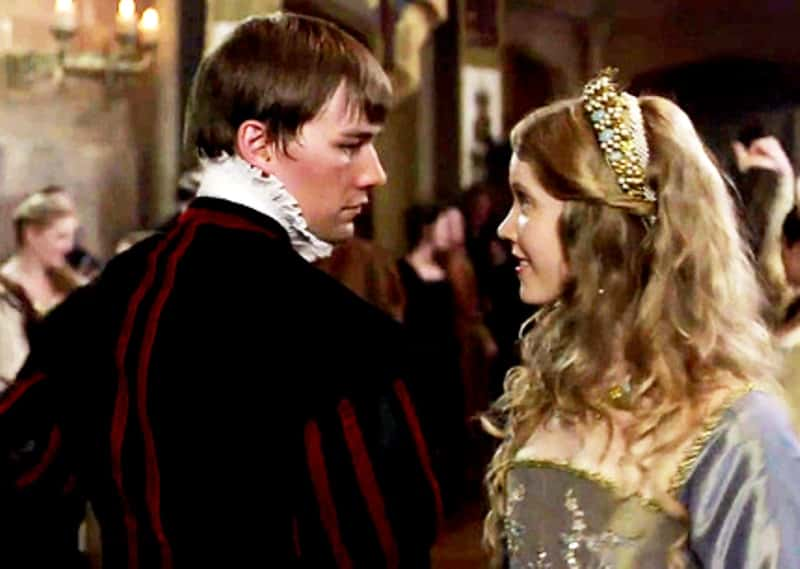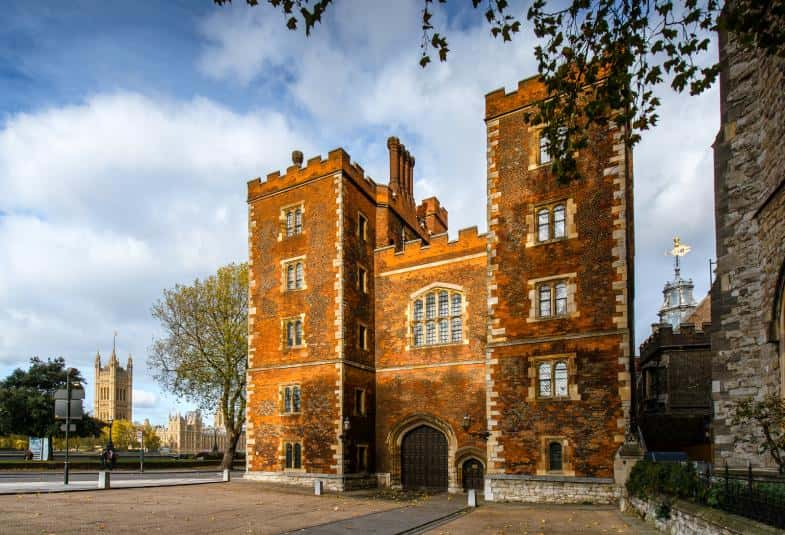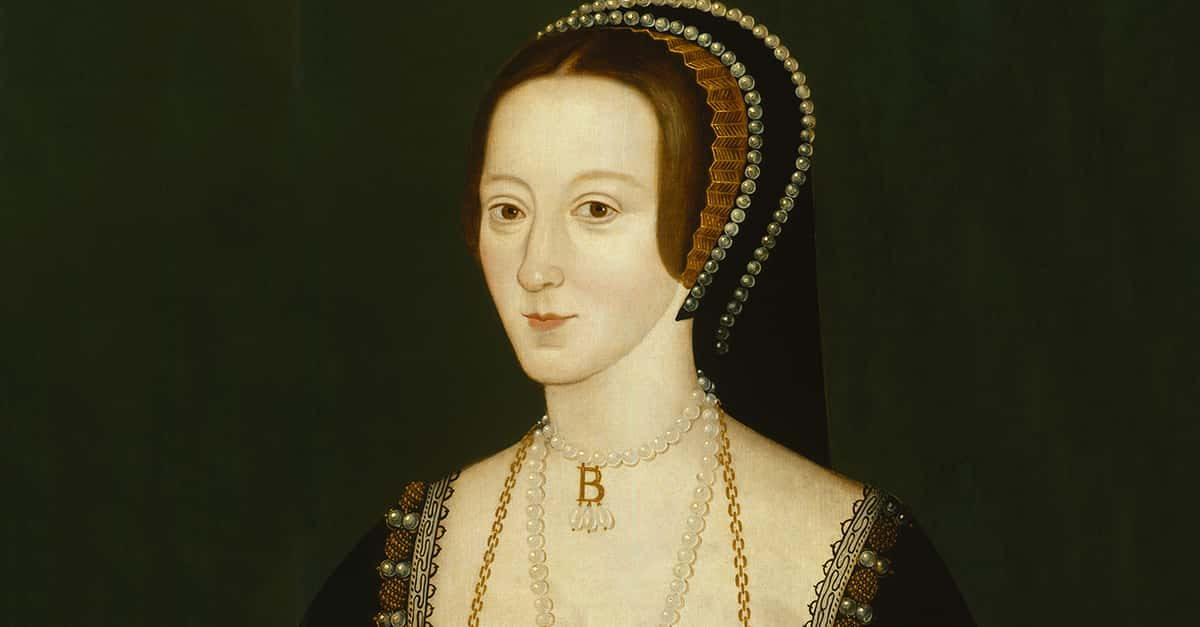“I die a Queen, but I would rather have died the wife of Culpeper.”—Not Catherine Howard, apparently.
Catherine Howard reigned for barely a year-and-a-half. She seemingly left behind no children, lasting charities, or legacies—except for one huge tragedy. She was the fifth wife of King Henry VIII, and only the second English queen to ever be executed for adultery and treason.
Anne Boleyn, the first queen to face this execution, inspires popular sympathy for her religious martyrdom, for the royal turmoil she inspired, for her comparative power, and for giving birth to Elizabeth I. In contrast, history best remembers Catherine Howard as a passive pawn and figure around whom tragic things simply happened. And where Catherine is rendered as an active figure, it’s hardly flattering; she’s drawn as vampy, vapid, and utterly victimized by a bloody Bluebeard. But what is the truth? Was she so guilty? Was she so wronged? Fetch a block for these 47 myth-breaking facts about Queen Catherine Howard.
 Liaeden
Liaeden
47. Keeping It in the Family
Catherine Howard was the first cousin of Henry VIII’s doomed second wife, Anne Boleyn. As a result, Catherine was also the first cousin of her own younger stepdaughter, Anne’s daughter, the future Elizabeth I.
 Pinterest
Pinterest
46. Miss Mystery
Surprisingly for such a highborn lady, the details about Catherine’s early life are mostly a mystery. We don’t even know what year exactly she was born or even where—although people generally believe it was around 1523 in Lambeth, England. We don’t even know what the birth order was in her huge family. Catherine was the daughter of Edmund Howard and the once-widowed Joyce Culpeper; the future queen might have been about her father’s fifth child but, impressively, her mother’s tenth. With so many Howards running around, it gets confusing.
45. Cheaper by the Dozen Is Depressing in Real Life
Despite her aristocratic birth, Catherine spent most of her childhood in aristocratic poverty. While her father Edmund was the son of a duke, he was a younger son and just one of 21 children. Thanks to primogeniture, it was the eldest son who would inherit the lion’s share of the estate. With Edmund himself having a lot of children, the family’s cut of the inheritance was pretty small.
44. Daddy Small Bucks
Catherine’s father was a notorious highborn beggar. As a younger son with not many skills besides being highborn, Edmund Howard depended on hand-outs from rich relatives to support his large family. Thanks to his niece Anne Boleyn’s rise to favor with the King, however, Edmund secured a modest position as Controller of Calais in 1528. Edmund died in 1539—less than a year shy of his own daughter’s rise to become Queen of England. Edmund could have really used a kingly son-in-law while he was alive.
43. Away From Home
With her father away in France for work and her mother recently dead, Catherine was sent to live with her step-grandmother, Agnes Howard, the Dowager Duchess of Norfolk, in about 1528. But it was hardly a disciplined upbringing; Agnes was an old woman, often away at court in London, and generally disinterested in playing a close role in the upbringing of her wards. Nonetheless, Catherine gained some experience in comporting herself within a large, prestigious household and made plenty of friends…
42. Not Just an Airhead
Despite her youth and inexperience, Catherine managed some diplomatic accomplishments in her short time as queen. She was a key part in convincing the King to release Sir Thomas Wyatt. The poet and former suitor of Anne Boleyn got himself arrested for treason after making some “rude” remarks about his Majesty. This was not the first time Wyatt had been arrested—he was detained as a suspect during Anne Boleyn’s adultery trial in 1536, but he had been cleared and released. This second strike did not look good for Wyatt, but Catherine managed to take pity on him and secure a pardon. Considering Wyatt’s history with Henry, that huge feat suggests that Catherine possess at least some political potential that was cut off too soon.
41. Not Living to Learn
Catherine was not among the most educated of Henry VIII’s queens. But in the big picture, her education was perfectly appropriate for her state in life and compared to most girls of the day. She could read and write—although letter writing would contribute to her downfall—she could dance well, and she could play music. Another thing that would contribute to her downfall…
40. Charm School
While Catherine’s wasn’t the most prosperous or well-educated lady in Henry VIII’s court, you could at least say she was well-mannered. The French ambassador Charles de Marillac once described Catherine as possessing “superlative grace” and a “modest” bearing, which in those times, they liked in women.
 Pinterest
Pinterest
39. Just Hot Enough
Auburn-haired, petite, and fair, Catherine met the beauty standards of early-modern Europe. Only the French ambassador Charles de Marillac—the same guy who praised her charm as “superlative”—offered a mildly dissenting view by reporting her as a “moderate beauty.” Maybe he didn’t want Catherine to have a big head.

History's most fascinating stories and darkest secrets, delivered to your inbox daily.
38. Vamp or Victim?
The traditional historiography for Catherine Howard has framed her first “romance” with Henry Mannox as evidence of her “licentious” pre-Queen life. In recent years, more historians have gotten around to agreeing that Mannox more likely took advantage of her. After all, Catherine was about 13 years old; Mannox was in his 30s and her music teacher. While both would testify they never consummated their “relationship,” it certainly got close enough to be inappropriate.
37. Marriage 1.0
Before she was ever queen, a man named Francis Dereham spelled the end for Catherine Howard. It involves legal loopholes, so let us explain: when Catherine was a young teenager, she became “lovers” with Dereham, a secretary of her step-grandmother’s estate, who was about 10 years older. This union was definitely consummated. They were engaged to be engaged, referring to each other as “husband” and “wife.” Under the laws of the Church, this cohabitation, plus consummation, would equal something as good as a “real” marriage…if they exchanged pre-contract vows. Many of Catherine’s roommates were aware of her arrangement. However, when the Duchess uncovered their affair in 1539, the relationship ended and Dereham went away to Ireland. Some speculate the couple did, in fact, exchange vows before he left. If this is true, Catherine was as good as already married when she wed Henry VIII—and had therefore committed treason.
 Pinterest
Pinterest
36. Moving on Up
Catherine was not the first wife of Henry VIII to serve as her predecessor’s lady-in-waiting—see Anne Boleyn and Jane Seymour. In late 1539, Catherine’s uncle, Thomas, the Duke of Norfolk, secured her a courtly position as a maid of honor to Henry’s fourth and latest queen, Anne of Cleves. Henry did not take to his new German bride (that’s a whole other list …) but he definitely liked Anne’s pretty and young maid, Catherine Howard.
35. Pay Day
Within months of starting her career at court, Catherine was reaping the benefits of being a King’s mistress. She and her family received gifts and land grants from the aging ruler with a soft spot for teenaged Catherine. Historians still debate at how much of a hand Catherine’s uncle the Duke of Norfolk played in manipulating his niece and Henry’s feelings. Some say Catherine’s family deliberately pushed her onto Henry as their family figurehead; others argue that Catherine’s unsubtle flaunting doesn’t reflect someone being rigorously counselled by their elders and that her rise to power was an accident. Either way you cut it, the Howards certainly profited.
34. A Me Without a Thorn
Henry VIII supposedly declared Catherine his “rose without a thorn.” The King is said to have struck a coin with such words for Catherine in her honor. Only he probably didn’t. While Henry did mint a crowned rose coin with such words, this was made in about 1526—some 14 years before he ever met Catherine. And it was dedicated to himself, reading in Latin, “‘Henry a dazzling rose without a thorn.” Self-love is important, I guess.
33. New Hire
Henry annulled his marriage to Anne of Cleves after just six months of marriage on July 9, 1540. He married her lady-in-waiting, our own Catherine Howard, just 19 days later on July 28, 1540. If that wasn’t enough drama…
32. One Wedding and One Funeral
Catherine and Henry were married on the same day of Thomas Cromwell’s execution for high treason. Cromwell had been the mastermind behind Henry’s marriage to Anne of Cleves; the marriage’s failure put Cromwell out of favor and left him vulnerable to his enemies and Henry’s wrath. Ironically, it also paved the way for Catherine to come to court and meet Henry.
31. Bend the Knee, Collect the Crown
Catherine’s official queenly motto was “Non autre volonte que la sienna,” which meant “No other will but his.” It was a display of queenly obedience as sweet as it was strategic.
30. Just Do a Partner Tattoo Next Time
Like her famous queenly first cousin, Catherine had a taste for French fashion. She was treated to an abundance of new French dresses as a regimen. She also had her “No other will but his” motto sewn in gold at the edges of her sleeves.
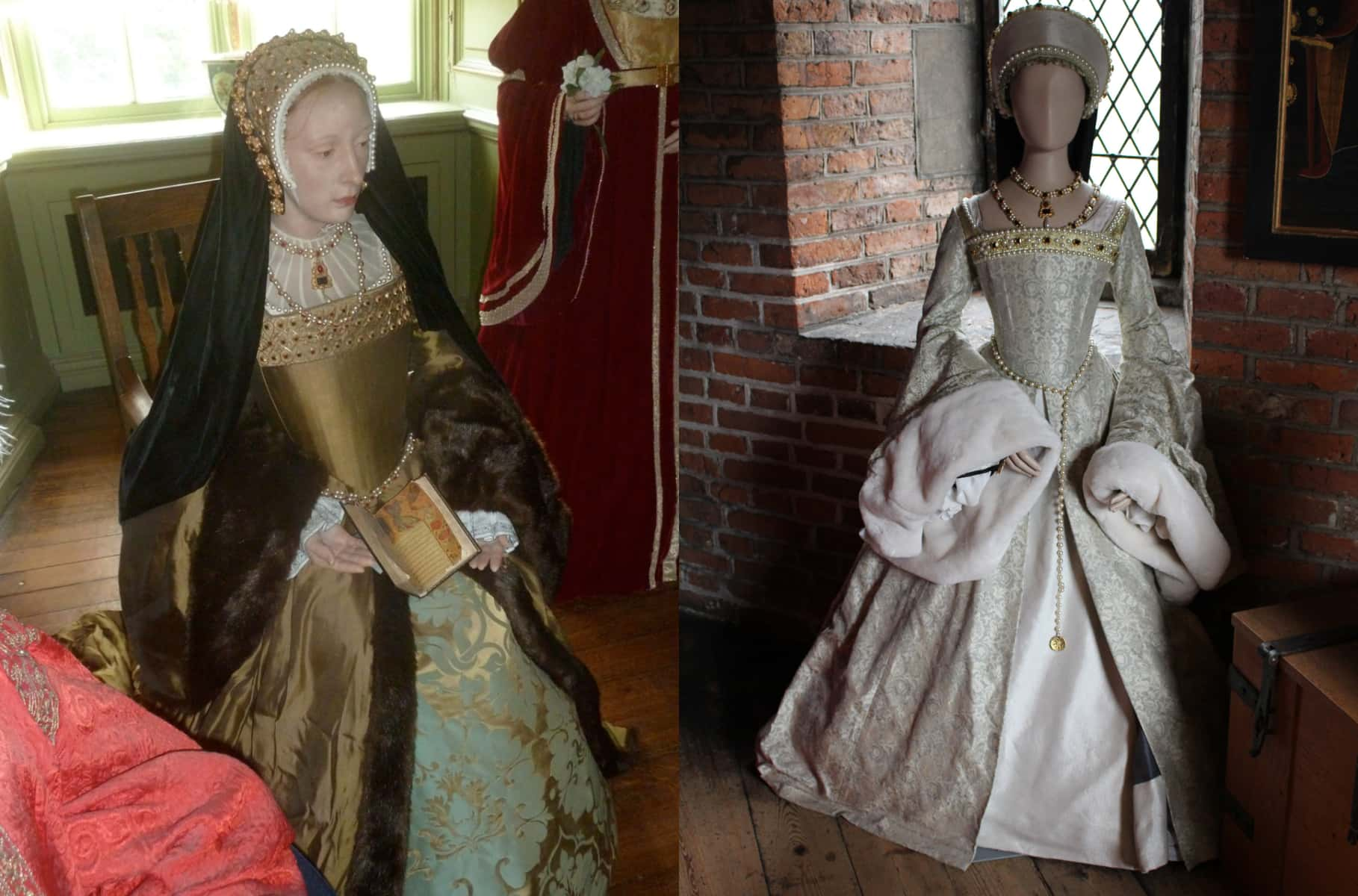
29. Big Man in the City
Catherine was the youngest of Henry VIII’s brides. He was about 30 years older, as well as much bigger and sicker. By 1540, his waist measured at 52 inches. Seeing as so many accounts of Catherine emphasize her youth and petite figure, the contrast must have been noticed by the Queen herself.
28. Family Feud
Catherine had a tense relationship with her eldest stepchild, Mary Tudor. For one, Catherine was two to seven years younger than Mary. Family tensions came to a head in December 1540, when Catherine punished the Princess by banishing two of Mary’s own ladies from court. The Queen felt Mary had fallen short of the respect she had shown her last stepmother, Anne of Cleves.
 YouTube
YouTube
27. Peace Pomander
Relations between Catherine and her stepdaughter Mary cooled down in within a few months of that tense December. By May of 1541, she had gifted Mary with a gold pomander of jewels and pearls. For the record, I also welcome all apologies in the form of jewelry.
26. Cousin’s Pet
Catherine’s favorite stepchild was Henry’s daughter by Anne Boleyn, the future Elizabeth I. The mostly-neglected seven-year-old was treated to the “place of honor” at her stepmother/cousin’s dinner table. Catherine made a point to invite Elizabeth to court and gift her some jewelry that was “of little thing worth” for a King’s daughter, but sweet in its personalized gesture and engravings.
25. What a Haul
At least in public, Anne of Cleves didn’t hold being replaced by her own maid against Catherine at all. The same year that Henry annulled her married and wed Catherine, Anne visited court for Christmas. Anne gifted the couple some horses. In turn, the Queen gave her ex-boss a ring and two puppies as Christmas gifts, and the two even danced together. Granted, Catherine had actually regifted the ring and dogs that Henry had given to her, but it’s the thought—and swag—that counts!
24. Keep It in the Family: Part Two
While she was still a maid-of-honor to Anne of Cleves, Catherine was also courted by a favorite of the King, Thomas Culpeper. He was a cousin from her mother’s side, but that didn’t stop her from considering marriage until Henry came along. Unfortunately, at least the emotional aspect of their relationship continued after she was married.
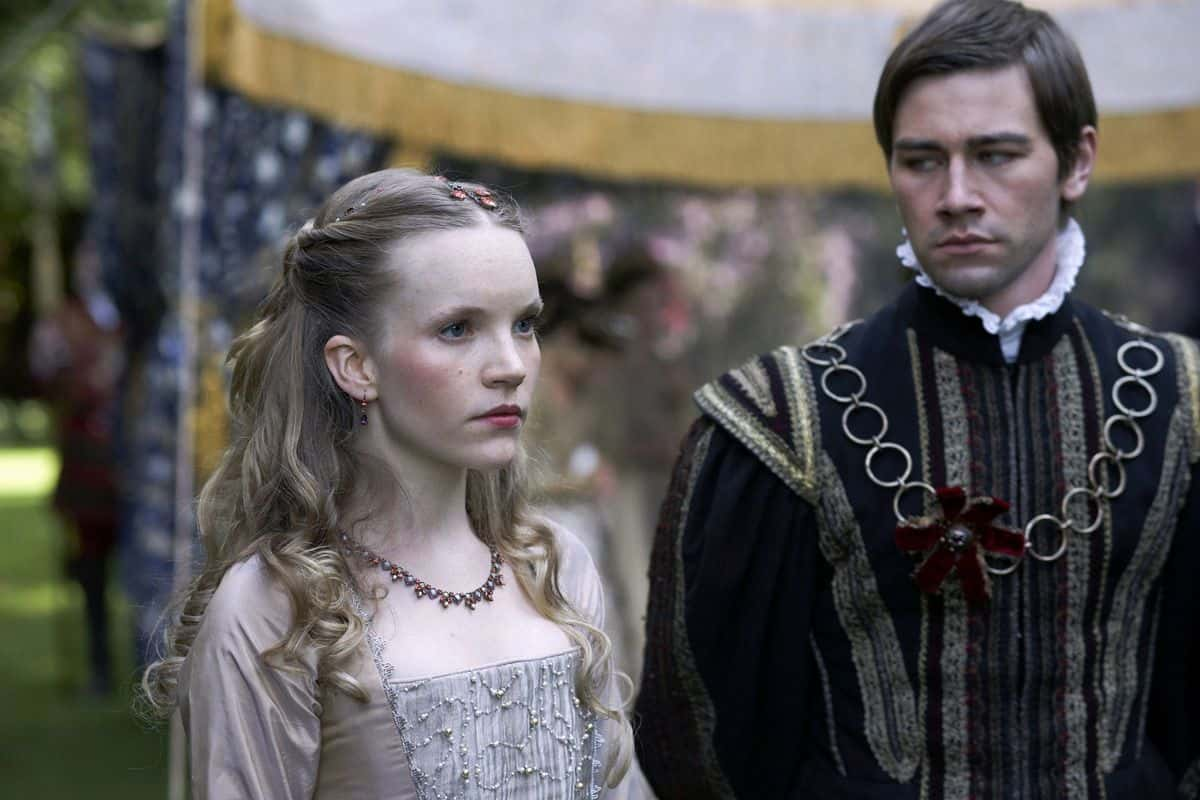 Pinterest
Pinterest
23. Writing Yourself to Death
Only two pieces of Catherine’s writing survive: her love letter to Thomas Culpeper, written while she was Queen, and her confession.

22. Sisters Before Misters
To maintain with her relationship with Thomas Culpeper, Catherine enlisted the help of her lady-in-waiting, Lady Rochford, aka Jane Parker, aka Jane Boleyn, the widowed sister-in-law of Anne Boleyn. Her husband, George, had been executed for treason alongside his sister during the Boleyn’s downfall in 1536. For helping Catherine see Culpeper, Jane would meet the same fate.
 Pinterest
Pinterest
21. What Happens in the Dorm Doesn’t Stay in the Dorm
In the end, one of Catherine’s old friends was the first to “turn” her in. When John Lascelles asked his sister, Mary, why she wouldn’t petition her old dorm buddy for a job at court, Mary responded that she didn’t approve of Catherine’s “light” ways from their Lambeth days. John reported this to the Archbishop of Canterbury, who then interrogated Mary. From this, he gained information about Catherine’s pre-contract of marriage to Francis Dereham.
20. When It Rains, It Pours
The earliest investigations against Catherine weren’t for adultery; the pre-contract to Francis Dereham has been enough to probably remove her from the throne, maybe not execute her for treason. But when Thomas Cranmer questioned Jane Boleyn, she broke down and told them about Catherine’s meetings with Thomas Culpeper. Not what they were looking for, but it was more than enough.
19. This Is Why You Clean Your Inbox
A love letter from Catherine to Thomas Culpeper was discovered in a search through the former’s chambers, written in her distinct handwriting. In the fateful letter, Catherine reveals that her heart belongs to Culpeper, not Henry. As she wrote, “when I think again that you shall depart from me again it makes my heart die to think what fortune I have that I cannot be always in your company.” She signed the letter “yours as long as life endures.” That life would not endure long.
18. No Way Out
When Catherine was first questioned, the Archbishop ordered the removal of all sharp objects from her chambers. Catherine had become so distressed, practically incoherent, that he considered her a suicide risk.
17. Queen to the Tomb
Admitting to a pre-contract could have saved her life and resulted in her simply being banished from court and crown. But to the end, Catherine would insist that she consented to nothing with Dereham, and that there was no legal inhibition to her royal marriage.
16. Ghost with the Most
Catherine’s arrest inspires one of the more famous ghost stories in English royal history. If you go to Hampton Court Palace, it’s said you can catch the specter of a screaming young lady in white, rushing down the “Haunted Gallery.” The story goes that Catherine briefly escaped her arrest and ran to where the King was hearing mass. Before she could make it to the door and beg for her life, the young Queen was dragged back to her apartments, kicking and screaming.
15. Scrooge
Catherine was officially stripped of her queenship on November 23, 1541. She spent the rest of the winter under house arrest at a former convent in the new Syon Abbey, Middlesex. As a result, Christmas celebrations were canceled that year. The king was simply too bummed out.
14. Looking Out for Number 1
Many of Catherine’s relatives were arrested for their suspected knowledge of her sexual past. Her uncle Thomas Howard, the Duke of Norfolk, wrote a groveling letter which lay the blame entirely on his stepmother and niece. Nice one, Thom.
13. I Fought the Law and the Law Won
If you were reading this far and thinking, “Pre-contract and flirting with your husband’s employee hardly sounds like treason,” you were not alone. So, while Catherine was under arrest, Parliament passed the Royal Assent by Commission Act of 1541. This new law made it treason for a king’s wife to not disclose her sexual past to the king within 20 days of their wedding. It also made it illegal for the consort to even encourage adultery with herself. This act effectively closed that legal loophole and, with it, Catherine’s metaphorical noose.
12. Getting Ahead
Her ex-“husband,” Francis Dereham, was hanged, drawn and quartered for high treason on December 10, 1541. Thomas Culpeper who received the more “dignified” death by a simple beheading on the same date.
 Pinterest
Pinterest
11. Practice Makes Perfect
On the eve of her execution, Catherine asked for a chopping block. She allegedly spent hours laying her head up and down, again and again, making sure she would get it just right on the big day.
10. My Bloody Valentine
Catherine was executed on February 13, 1542, just a day before Valentine’s Day. Ironically, it was Henry VIII himself who would make Valentine’s Day an official English holiday in 1537. Who knew he was decreeing a special occasion to be bummed seven years later?
9. Learning Moment
Victorian England took a big interest in monarchal history, partly as a way to shore up the growing British Empire. And they certainly took to Catherine Howard, albeit in a less than flattering way. On one hand, Victorian interest in Tudor history is largely why she’s studied and remembered. But on the other hand, those Victorians loved to use Catherine Howard as a “grand moral lesson” about “fallen women.”
8. Two for the Price of One
Catherine died with a single axe stroke, but her death was a double feature. The lady-in-waiting who assisted her affair with Thomas Culpeper was beheaded right after her mistress.
7. Wordplay
Despite what folklore—and shows like The Tudors—have to say about Catherine’s final words, there is no evidence that she ever said “I die a Queen, but I would rather have died the wife of Culpeper” on the scaffold. While it’s fun to imagine Catherine using her last moments to snub her scary husband, it’s a myth: she stuck to the traditional words about mercy and deserving “to die a thousand deaths” for betraying a king who always treated her so “graciously.” She was about 19 years old.
 Pinterest
Pinterest
6. Girls Night
The Lambeth Palace where Catherine grew up was home to many highborn wards, but it was also notoriously lax in discipline. Catherine grew up around unsupervised and wealthy youths, who did what wealthy youths do when they’re unsupervised. It was pretty common for other young ladies to “entertain” gentleman callers in their dorms in front of each other. To what degree Catherine participated in these activities, versus being a simple spectator, remains a debate to this day.
5. Oh, K
Catherine lived in a time before standardized spelling, so sometimes her name is written as “Katheryn.” This is how she signs her name in a love letter to Thomas Culpeper, so don’t get confused if you see it again somewhere else.
4. That’s What You Get for Trusting People
Initially, Henry was unwilling to believe that his sweet fifth wife could ever be dishonest to him. When he first received a letter of accusations against Catherine, the King insisted it was forgery and ordered a private investigation only so her name could be cleared. After a few days, however, the evidence seemed uglier and more concrete.
3. Crosswords
When Henry VIII learned of Catherine’s emotional affair with his own favorite courtier, Thomas Culpeper, the king reportedly flew into a rage and called for a sword, so he could kill his wife himself. Obviously, he did not go through with his own original wishes and had the matter outsourced.
2. Gone Baby Gone
Back in spring 1541, there were rumors that Catherine was pregnant. Pre-arrangements for her coronation were soon made. But since no baby ever materialized—either by mistake or miscarriage, no one is sure—neither did the celebrations. Who knows what an heir could have done to save her life?
1. Who Needs a Reason?
Was Catherine Howard’s death the second nail in Queen Elizabeth’s “I’m done with men” coffin? Robert Dudley, the childhood friend and adult favorite of Elizabeth I, would remember how hard the future Elizabeth I took her stepmother’s execution. At the news, an eight-year-old Elizabeth allegedly vowed that she would never marry. There were many reasons why Elizabeth never wed, but Catherine’s death and Dudley’s account sure make for a good “Rosebud” story, don’t they?
Sources: 1, 2, 3, 4, 5, 6, 7, 8, 9, 10, 11, 12, 13, 14, 15, 16, 17, 18, 19








